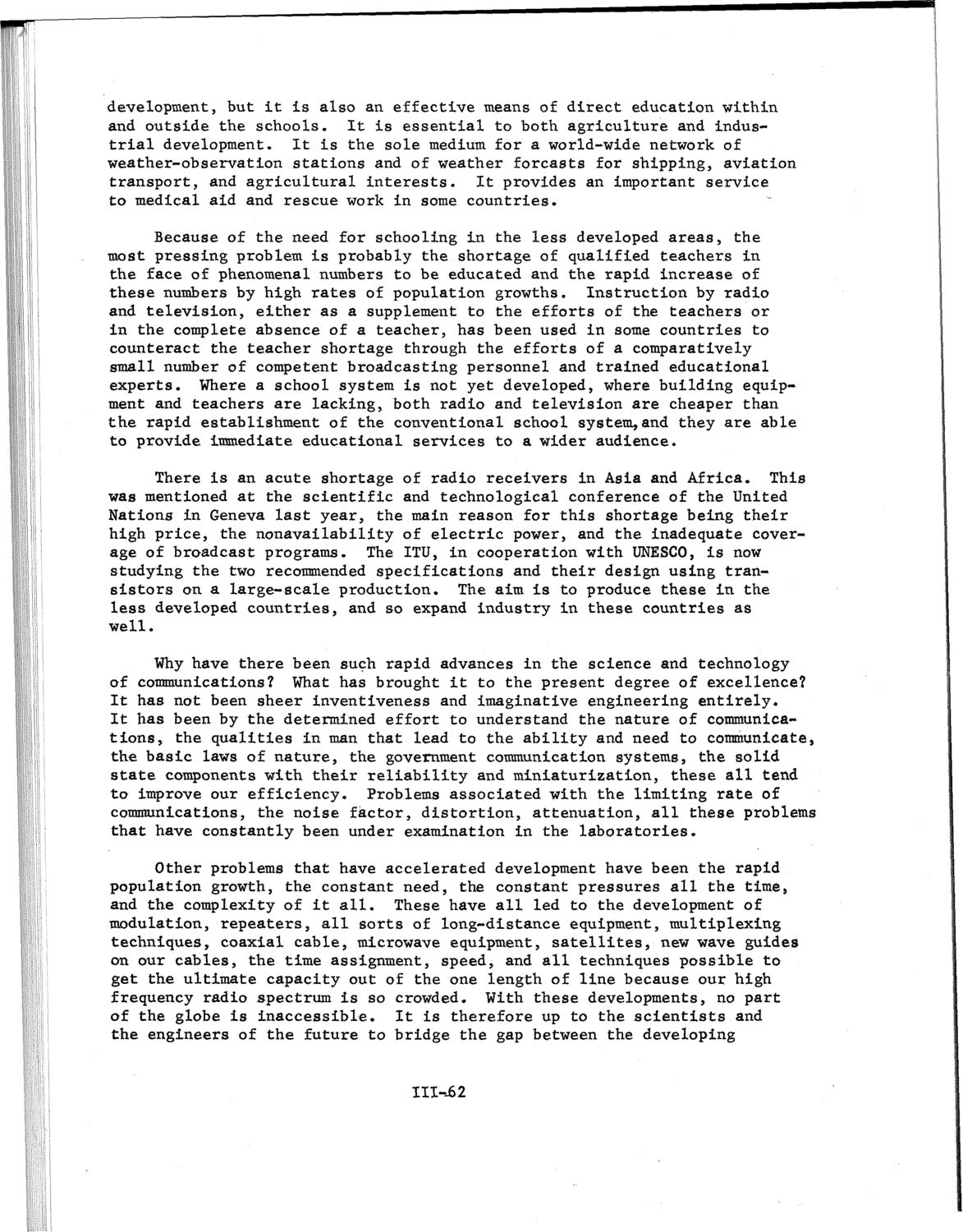| |
| |
Caption: SWE - Proceedings of the First International Conference of Women Engineers and Scientists
This is a reduced-resolution page image for fast online browsing.

EXTRACTED TEXT FROM PAGE:
development, but it is also an effective means of direct education within and outside the schools. It is essential to both agriculture and industrial development. It is the sole medium for a world-wide network of weather-observation stations and of weather forcasts for shipping, aviation transport, and agricultural interests. It provides an important service to medical aid and rescue work in some countries. Because of the need for schooling in the less developed areas, the most pressing problem is probably the shortage of qualified teachers in the face of phenomenal numbers to be educated and the rapid increase of these numbers by high rates of population growths. Instruction by radio and television, either as a supplement to the efforts of the teachers or in the complete absence of a teacher, has been used in some countries to counteract the teacher shortage through the efforts of a comparatively small number of competent broadcasting personnel and trained educational experts. Where a school system is not yet developed, where building equipment and teachers are lacking, both radio and television are cheaper than the rapid establishment of the conventional school system, and they are able to provide immediate educational services to a wider audience. There is an acute shortage of radio receivers in Asia and Africa. This was mentioned at the scientific and technological conference of the United Nations in Geneva last year, the main reason for this shortage being their high price, the nonavailability of electric power, and the inadequate coverage of broadcast programs. The ITU, in cooperation with UNESCO, is now studying the two recommended specifications and their design using transistors on a large-scale production. The aim is to produce these in the less developed countries, and so expand industry in these countries as well. Why have there been such rapid advances in the science and technology of communications? What has brought It to the present degree of excellence? It has not been sheer inventiveness and imaginative engineering entirely. It has been by the determined effort to understand the nature of communications, the qualities in man that lead to the ability and need to communicate, the basic laws of nature, the government communication systems, the solid state components with their reliability and miniaturization, these all tend to improve our efficiency. Problems associated with the limiting rate of communications, the noise factor, distortion, attenuation, all these problems that have constantly been under examination in the laboratories. Other problems that have accelerated development have been the rapid population growth, the constant need, the constant pressures all the time, and the complexity of it all. These have all led to the development of modulation, repeaters, all sorts of long-distance equipment, multiplexing techniques, coaxial cable, microwave equipment, satellites, new wave guides on our cables, the time assignment, speed, and all techniques possible to get the ultimate capacity out of the one length of line because our high frequency radio spectrum is so crowded. With these developments, no part of the globe is inaccessible. It is therefore up to the scientists and the engineers of the future to bridge the gap between the developing III--62
| |